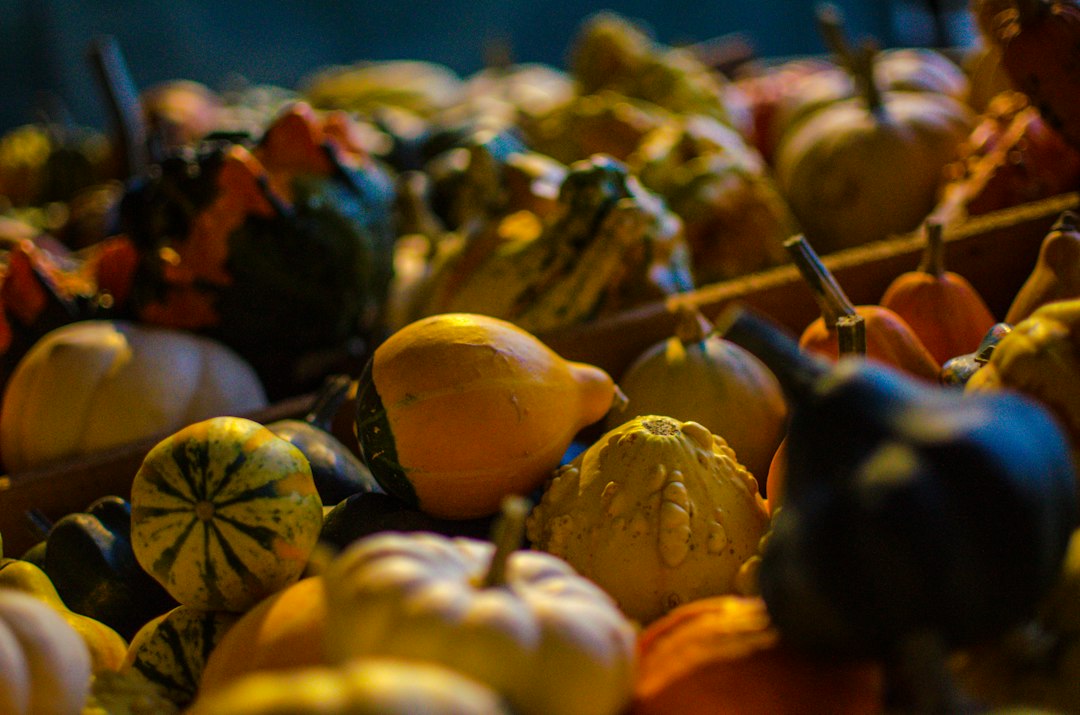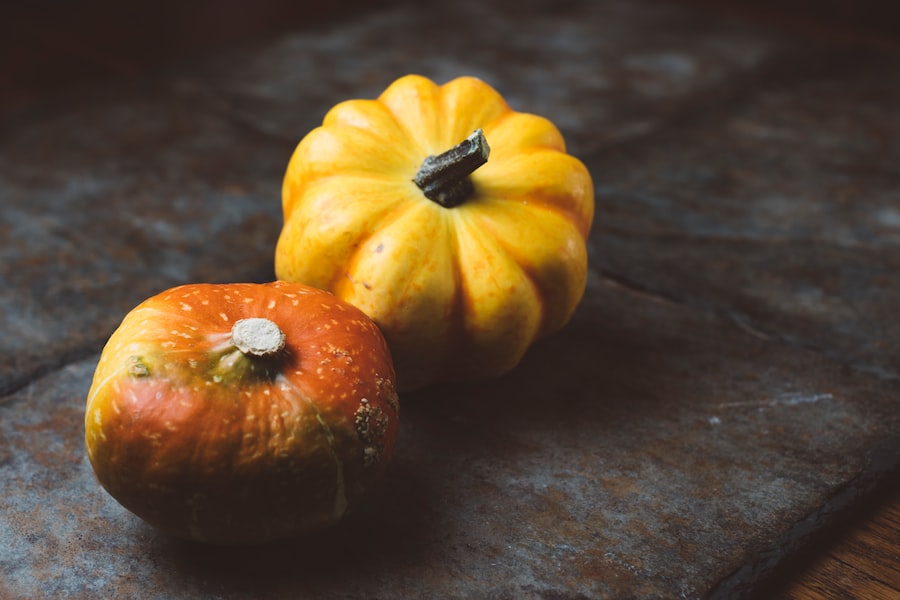Harvesting Spaghetti Squash: A Guide to Picking at the Perfect Time

Spaghetti squash has gained popularity in recent years as a healthy and delicious alternative to traditional pasta. This winter squash variety is known for its unique stringy flesh that resembles spaghetti noodles when cooked. As more people embrace healthier eating habits and seek out gluten-free options, spaghetti squash has become a staple in many kitchens.
Proper harvesting techniques are essential to ensure that you get the best quality and flavor from your spaghetti squash. Harvesting at the right time and handling the squash correctly can make a significant difference in the taste and texture of the final dish. In this article, we will explore the various aspects of spaghetti squash harvesting, from understanding its growth cycle to identifying ripe squash and proper post-harvest handling.
Key Takeaways
- Spaghetti squash is a delicious and nutritious vegetable that can be harvested in the fall.
- To identify a ripe spaghetti squash, look for a hard, smooth skin and a dull yellow color.
- Factors to consider when harvesting spaghetti squash include weather conditions, plant health, and size.
- The best time of day to harvest spaghetti squash is in the morning when the temperature is cooler.
- Tools and equipment needed for harvesting spaghetti squash include gloves, pruning shears, and a basket or bucket.
Understanding the Growth Cycle of Spaghetti Squash
To effectively harvest spaghetti squash, it is crucial to understand its growth cycle. Spaghetti squash starts as a seed, which is planted in the ground or in containers. It then goes through several stages of growth before reaching maturity.
The first stage is germination, where the seed sprouts and develops into a seedling. During this stage, it is essential to provide adequate water and sunlight to promote healthy growth. Once the seedling has established roots and leaves, it enters the vegetative stage, where it grows rapidly and develops vines.
The next stage is flowering, where the plant produces male and female flowers. Bees and other pollinators play a crucial role in transferring pollen from the male flowers to the female flowers, which leads to fruit development. After successful pollination, the fruit begins to grow and mature over several weeks.
Factors such as temperature, sunlight, water, and soil quality can affect the growth and development of spaghetti squash. It is important to provide optimal growing conditions to ensure healthy plants and a bountiful harvest.
How to Identify a Ripe Spaghetti Squash
Knowing when to harvest spaghetti squash is essential to ensure that it is at its peak flavor and texture. There are several physical characteristics and signs to look for when determining the ripeness of spaghetti squash.
A ripe spaghetti squash will have a deep yellow or orange color. The skin should be firm and free from blemishes or soft spots. The stem should be dry and brown, indicating that the squash has detached from the vine naturally.
Another way to determine ripeness is by pressing your fingernail into the skin. If the skin is hard and resists puncture, the squash is not yet ripe. However, if your nail easily pierces the skin, it is a sign that the squash is overripe and may not have the desired texture.
Additionally, the size of the spaghetti squash can also indicate ripeness. Most varieties of spaghetti squash reach maturity when they are around 8 to 10 inches in length. However, it is important to refer to the specific variety’s guidelines for optimal harvest size.
Factors to Consider When Harvesting Spaghetti Squash
| Factors to Consider When Harvesting Spaghetti Squash |
|---|
| 1. Size |
| 2. Color |
| 3. Texture |
| 4. Stem |
| 5. Time of Harvest |
Several factors should be considered when harvesting spaghetti squash to ensure a successful harvest. Weather conditions play a significant role in determining when to harvest. If there is a risk of frost or extremely cold temperatures, it is best to harvest all mature squash before they are exposed to these conditions.
Timing and frequency of harvests are also important considerations. Spaghetti squash can be harvested once they have reached maturity, but it is best not to leave them on the vine for too long after they are ripe. Overripe squash can become mushy and lose their flavor.
Proper handling of spaghetti squash during harvesting is crucial to prevent damage. It is important to use sharp tools and cut the stem about an inch above the fruit. Avoid pulling or twisting the squash off the vine, as this can cause damage and increase the risk of spoilage.
The Best Time of Day to Harvest Spaghetti Squash
The best time of day to harvest spaghetti squash is in the morning when the temperatures are cooler. This is because cooler temperatures help preserve the quality and flavor of the squash. Harvesting in the morning also allows for optimal handling and storage conditions.
However, if morning harvesting is not possible, late afternoon or early evening can also be suitable times. It is important to avoid harvesting during the hottest part of the day, as this can cause stress to the plants and increase the risk of damage to the squash.
Factors such as temperature, humidity, and sunlight can affect the best time to harvest spaghetti squash. It is important to consider these factors and adjust your harvesting schedule accordingly.
Tools and Equipment Needed for Harvesting Spaghetti Squash

Harvesting spaghetti squash requires a few essential tools to ensure a successful harvest. The most important tool is a sharp knife or pruners for cutting the stem. A dull knife can cause damage to the squash and increase the risk of spoilage.
Gloves can also be useful when handling spaghetti squash, as they provide protection against thorns or prickly vines. Additionally, a wheelbarrow or basket can be used to collect and transport the harvested squash.
Optional equipment that can make the harvesting process easier includes knee pads or a kneeling pad for comfort while working in the garden. A garden apron with pockets can also be useful for storing small tools or gloves.
Techniques for Properly Harvesting Spaghetti Squash
Proper harvesting techniques are essential to ensure that spaghetti squash is harvested at its peak flavor and quality. Here are step-by-step instructions for harvesting spaghetti squash:
1. Inspect the squash: Before harvesting, inspect each squash for ripeness. Look for deep yellow or orange color, firm skin, and a dry brown stem.
2. Cut the stem: Using a sharp knife or pruners, cut the stem about an inch above the fruit. Avoid pulling or twisting the squash off the vine, as this can cause damage.
3. Handle with care: Handle the squash gently to avoid bruising or puncturing the skin. Place the harvested squash in a wheelbarrow or basket to prevent damage.
4. Clean and dry: Once you have finished harvesting, clean any dirt or debris from the squash. Allow them to dry completely before storing or using.
Tips for avoiding damage to the squash during harvesting include wearing gloves to protect your hands, using a sharp knife for clean cuts, and being careful not to drop or mishandle the squash.
Post-Harvest Handling and Storage of Spaghetti Squash
Proper post-harvest handling and storage are crucial to extend the shelf life of spaghetti squash and prevent spoilage. Here are some tips for handling and storing spaghetti squash:
1. Clean and dry: Before storing, clean any dirt or debris from the squash. Allow them to dry completely to prevent moisture buildup, which can lead to rot.
2. Store in a cool, dry place: Spaghetti squash should be stored in a cool, dry place with good air circulation. A pantry or cellar is ideal for long-term storage.
3. Avoid stacking or overcrowding: Do not stack or overcrowd the squash during storage, as this can lead to bruising or damage. Leave enough space between each squash for air circulation.
4. Check regularly: Check the stored squash regularly for any signs of spoilage or rot. Remove any damaged or overripe squash to prevent them from affecting others.
By following these storage techniques, you can extend the shelf life of spaghetti squash and enjoy its delicious flavor for several months.
Common Mistakes to Avoid When Harvesting Spaghetti Squash
There are several common mistakes that people make when harvesting spaghetti squash that can lead to damage or spoilage. Here are some tips for avoiding these mistakes:
1. Harvesting too early or too late: Harvesting spaghetti squash too early can result in underripe squash with a bland flavor. On the other hand, leaving them on the vine for too long can lead to overripe squash that is mushy and lacks flavor.
2. Rough handling: Rough handling of spaghetti squash during harvesting can cause bruising or puncturing of the skin. This can increase the risk of spoilage and reduce the quality of the squash.
3. Storing damaged squash: It is important to inspect each squash before storing and remove any damaged or overripe ones. Storing damaged squash can lead to spoilage and affect the quality of other squash.
4. Improper storage conditions: Spaghetti squash should be stored in a cool, dry place with good air circulation. Storing them in a humid or warm environment can lead to rot and spoilage.
By avoiding these common mistakes, you can ensure a successful harvest and enjoy the full flavor and quality of your spaghetti squash.
Enjoying the Fruits of Your Labor: Delicious Spaghetti Squash Recipes
Once you have harvested your spaghetti squash, it’s time to enjoy the fruits of your labor by preparing delicious dishes. Spaghetti squash is incredibly versatile and can be used as a substitute for pasta in various recipes.
One popular way to enjoy spaghetti squash is by roasting it and serving it with your favorite sauce or toppings. Simply cut the squash in half lengthwise, remove the seeds, and roast it in the oven until tender. Then, use a fork to scrape out the flesh, which will resemble spaghetti noodles. Top it with marinara sauce, pesto, or your favorite toppings for a healthy and satisfying meal.
Another delicious option is to use spaghetti squash as a base for stir-fries or salads. Sautee it with your favorite vegetables and protein for a nutritious and flavorful dish. You can also use it as a filling for stuffed peppers or as a topping for pizzas.
Experiment with different recipes and flavors to find your favorite way to enjoy spaghetti squash. With its mild flavor and unique texture, it is sure to become a staple in your kitchen.
Conclusion:
Harvesting spaghetti squash can be a rewarding experience that allows you to enjoy the delicious flavor and health benefits of this versatile winter squash. By understanding the growth cycle, identifying ripe squash, and using proper harvesting techniques, you can ensure a successful harvest.
Proper post-harvest handling and storage are also crucial to extend the shelf life of spaghetti squash and prevent spoilage. By following these guidelines and avoiding common mistakes, you can enjoy the fruits of your labor for months to come.
Growing and harvesting your own produce not only provides you with fresh and nutritious food but also allows you to connect with nature and appreciate the process of food production. So why not give spaghetti squash harvesting a try? With its delicious flavor and numerous culinary possibilities, it is sure to become a favorite in your kitchen.



